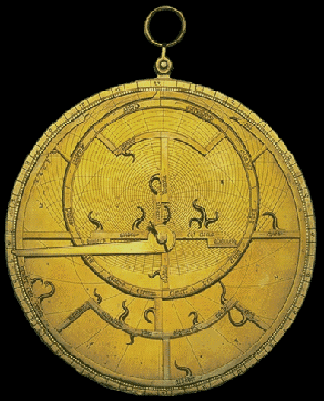On Symbolic Efficacy and Algorithmic Capture
by Christopher Vitale (crossposted at Networkologies).
In the most recent meeting of the reading group wing of Orbis Mediologicus, we discussed Siegfried Zielinski’s Deep Time of the Media: An Archaeology of Hearing and Seeing by Technical Means. Many of us were fascinated by the archive of materials Zielinksi presents, but somewhat dissapointed by his ability to bring his project to fruition in a sense we all found amenable. That said, we all seemed to feel that there was a lot to be said for the relevance of the study of pre-modern media formations.
Zielinski’s text is wonderful as an archive and, as he terms it, an ‘an-archaelogical’ one at that. I’m not convinced that an-archaelogy is necessarily more productive than the more traditional Foucaultian approach to the subject, one which tries to map out crucial transitions between epistemes, or in this case, perhaps counter-epistemes. Zielinski’s constellatory approach, which seems to want to avoid some of the mechanistic overtones inherent in the Foucaultian problematic, still also seems to lack the coherency of Benjamin’s constellatory approach (a coherency which could perhaps mitigate the otherwise disorganized nature of an a-archaeology). Despite these reservations, his archive of pre-modern forms of mediation is without question impressive.
But how can we, in a sense, put the study of pre-modern media to work? I don’t mean this in the sense of necessarily instrumentalizing such research. But while Zielinski does seem to feel that his inquiry is about finding new potentials within the past, my sense is that it is worth not only immersing ourselves in this archive, but trying to do the work of thinking about the ways in which potential futurities inhabit these spaces from the past. This is work he hints at, but does not himself perform.
One potential term which might help in the construction of the sorts of links that Zielinski seems to find outside the scope of his project is the notion of algorithmic capture. This term comes from Alexander Galloway’s writings on video games in Gaming: Essays on Algorithmic Culture. Galloway develops this term to describe the ways in which software interacts with the world by parcelling it into menus, tabs, buttons, and other virtual ‘handles’ which allow human users to manipulate data via the user interface at hand. Each time you use a website and click on a link, or use a pull-down menu on your brower, you capture a bit of the world, virtual or otherwise, using software based on computer code (the sorts of ‘recipes’ or sets of instructions otherwise known as ‘algorithms’).
Galloway emphasizes the manner in which capture by software algorithms, which divides up the world into specific tabs, buttons, and 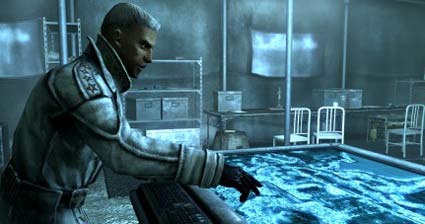 links which affect the software-mediated world in specific ways, also leaves out everything not captured by these tabs, buttons, and knobs outside the purview of the software at hand. Nowhere is this more evident in video-games, particularly those in which a user navigates a virtual world. For example, a game like Fall Out 3 has a character avatar roam a dystopian, post-nuclear disaster landscape. Often stumbling upon a room, some objects in a room can be picked up, and others can’t. In this sense, the software user interface only allows the avatar to manipulate certain aspects of the world. This carving up of the virtual world is precisely what Galloway feels is at stake with the term algorithmic capture.
links which affect the software-mediated world in specific ways, also leaves out everything not captured by these tabs, buttons, and knobs outside the purview of the software at hand. Nowhere is this more evident in video-games, particularly those in which a user navigates a virtual world. For example, a game like Fall Out 3 has a character avatar roam a dystopian, post-nuclear disaster landscape. Often stumbling upon a room, some objects in a room can be picked up, and others can’t. In this sense, the software user interface only allows the avatar to manipulate certain aspects of the world. This carving up of the virtual world is precisely what Galloway feels is at stake with the term algorithmic capture.
For Galloway, we need to begin asking the political and epistemological questions that subtend issues such as – which options become available to a user? Who determines this? Are there menus, special screens? What can be easily manipulated, and what is kept ‘under the hood’? In video games, for example – what parts of the virtual world can you alter, which are beyond the domain of the avatar? How are the options determined, and how are the options of options determined? Who builds the virtual worlds, and how? Can users generate new content? And as virtual technologies allow for more and more forms of ‘augmented reality’ – for example, new iPhone apps (such as those developed by Yelp!) which overlay computer links and options onto video ‘captured’ from the ‘real’ world – these questions will only increase in complexity.
there menus, special screens? What can be easily manipulated, and what is kept ‘under the hood’? In video games, for example – what parts of the virtual world can you alter, which are beyond the domain of the avatar? How are the options determined, and how are the options of options determined? Who builds the virtual worlds, and how? Can users generate new content? And as virtual technologies allow for more and more forms of ‘augmented reality’ – for example, new iPhone apps (such as those developed by Yelp!) which overlay computer links and options onto video ‘captured’ from the ‘real’ world – these questions will only increase in complexity.
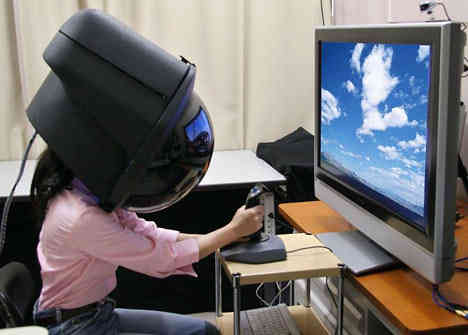 There are of course wider implications to this term. The hardware used by video games – such as controllers – only capture a small portion of the potential input by human users. Perhaps we should label these issues ‘hardware capture’. The scope of such forms of capture was widely increased, at least in the popular sphere, by the advent of the Nintendo Wii, in that no longer was it only the motion of your fingers that were captured by the controllers, but now the motion of limbs and body. That said, we have yet to see video games that truly capture our auditory signals, and the ability to manipulate computer avatars by simply thinking about moving a given object are still in their most rudimentary forms. If perhaps we see all these as forms of what Deleuze and Guattari have labelled ‘apparatus of capture’, the full potential of this approach becomes, I think, apparent.
There are of course wider implications to this term. The hardware used by video games – such as controllers – only capture a small portion of the potential input by human users. Perhaps we should label these issues ‘hardware capture’. The scope of such forms of capture was widely increased, at least in the popular sphere, by the advent of the Nintendo Wii, in that no longer was it only the motion of your fingers that were captured by the controllers, but now the motion of limbs and body. That said, we have yet to see video games that truly capture our auditory signals, and the ability to manipulate computer avatars by simply thinking about moving a given object are still in their most rudimentary forms. If perhaps we see all these as forms of what Deleuze and Guattari have labelled ‘apparatus of capture’, the full potential of this approach becomes, I think, apparent.
For example, we can see the way in which language is a form of media which demonstrates this notion of ‘capture’, even if not in a computer mediated form. A given language carves up the world into a variety of compartments, each of which is then manipulable by that language in a manner similar to the tabs we see on our web-browsers. Of course, the relation of language to the world is hardly a one-to-one correspondance (a point which Wittgenstein in his Tractacus attempted to argue to its impossible limits), in that the links between words and things is ultimately mediated by the system of language as a whole – similar to the manner in which tabs in a software system are mediated by the software’s virtual world as a whole – be this the virtual world of a video game, or even the virtual paper of a word-processing software or ‘windowed’ web-browser.
When we look at pre-modern media devices, we precursors of these forms of capture. Of course, language and images have been carving up the world and capture aspects of it for ‘manipulation’ since the beginning of human society – Vilem Flusser’s writings on the pre-history of images does an excellent job of linking cave-paintings, oil-paintings, and digital images in a periodization of these capture modalities. But it is with pre-modern media devices that we may have many useful virtual futures lurking in our mediated pasts. For as many historians of the digital have argued, the prehistory of the modern computer hides in the often forgotten past of Leibniz’s dreams of a universal characteristic, binary code, and adding machines, Pascal’s ‘Pascaline’, and a variety of additional alchemical and magical devices which aimed to capture aspects of the world for human manipulation. And as Flusser has argued, if we are returning to a realm of the image today, thereby moving beyond the hegemony of the word during what McLuhan famously called the ‘Gutenberg’ era, then perhaps we’d best understand the ways in which our precursors in the middle ages used images in their day during this previous era of the image. 
Contemporary science has of course disproved the theories which supported many of the symbol systems and devices which proliferated during this these time periods. That said, many of the fantastic devices and symbologies devised during this period in which the boundaries between magic, science, and religion flowed freely, can provide much food for thought on the potentialities for algorithmic capture to be deployed in the world. And it is important, I think, for us to realize that science isn’t the only way in which algorithmic capture might work.
In essays such as “The Sorcerer and his Magic” and “The Effectiveness of Symbols,” Claude Levi-Strauss investigates the ways in which the shamans he encountered during his trips to Brazil were able to use  symbols to effect real change in the lives of their subjects. Despite the fact that their methods would be considered highly questionable by modern science, Levi-Strauss shows that what is at issue in many of these practices is not scientific efficacy, but rather, symbolic efficacy. For example, in a variety of interviews with shaman he encounters, he shows how the ability to, say, capture an evil spirit in a bit of cotton, and then cast it out of the patient in an elaborate ceremony, actually helps the patient to recover. Levi-Strauss also examines the way in which the story of a mythical tale of spirits going one-by-one up into the body of a woman in the pains of a difficult childbirth, and then coming out side-by-side, actually helped the woman to relax her muscles and allow the child to come forth. Levi-Strauss argues that, in the case of the childbirth, it was the woman’s ability to interface with the virtual world of the story of the spirits entering her, battling evil spirits within her body, and then emerging, that put her in a state of increased relaxation whereby she was able to bring her physical muscles to a state of greater flexibility. Levi-Strauss argues that contemporary psychoanalysis works in a similar manner – the patient cathects a set of symbols with meaning, and in doing so, is able to differently interact with and manipulate parts of their world. Symbolic efficacy is what binds together shamanism and psychoanalysis, at least for Levi-Strauss, for in fact, both are examples of the larger ways in which we use symbols to divide the world into parts, capture these parts, and manipulate them (as they perhaps also manipulate us). This notion is only supported by those contemporary therapists who view both shamanism and psychoanalysis as modalities of healing via symbols. And if we go beyond this to Gestalt forms of therapy, much of which builds upon the body-techniques developed by Wilhelm Reich, we see the extent to which symbolic efficacy can go beyond the software of the symbolic to the (relatively) more hard-ware of the human body.
symbols to effect real change in the lives of their subjects. Despite the fact that their methods would be considered highly questionable by modern science, Levi-Strauss shows that what is at issue in many of these practices is not scientific efficacy, but rather, symbolic efficacy. For example, in a variety of interviews with shaman he encounters, he shows how the ability to, say, capture an evil spirit in a bit of cotton, and then cast it out of the patient in an elaborate ceremony, actually helps the patient to recover. Levi-Strauss also examines the way in which the story of a mythical tale of spirits going one-by-one up into the body of a woman in the pains of a difficult childbirth, and then coming out side-by-side, actually helped the woman to relax her muscles and allow the child to come forth. Levi-Strauss argues that, in the case of the childbirth, it was the woman’s ability to interface with the virtual world of the story of the spirits entering her, battling evil spirits within her body, and then emerging, that put her in a state of increased relaxation whereby she was able to bring her physical muscles to a state of greater flexibility. Levi-Strauss argues that contemporary psychoanalysis works in a similar manner – the patient cathects a set of symbols with meaning, and in doing so, is able to differently interact with and manipulate parts of their world. Symbolic efficacy is what binds together shamanism and psychoanalysis, at least for Levi-Strauss, for in fact, both are examples of the larger ways in which we use symbols to divide the world into parts, capture these parts, and manipulate them (as they perhaps also manipulate us). This notion is only supported by those contemporary therapists who view both shamanism and psychoanalysis as modalities of healing via symbols. And if we go beyond this to Gestalt forms of therapy, much of which builds upon the body-techniques developed by Wilhelm Reich, we see the extent to which symbolic efficacy can go beyond the software of the symbolic to the (relatively) more hard-ware of the human body.
If we look at the early modern period – full of alchemists and dreamers, cryptologists and machine-builders – it is rife with experimentation whereby people were attempting to find new ways to gain symbolic efficacy over their world. And many of these bore fruit once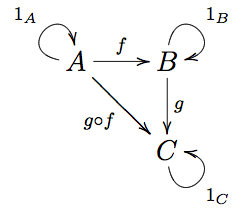 technology caught up with their dreams. Leibniz’s ideas about science, language, and the world in general are now increasingly finding themselves confirmed by new developments in quantum physics, just as his dreams of a binary code and universal characteristic are incarnated in varying degress within the form of modern computers. Many of these premodern media creators may have intuited potential ways to interact with the world that we are only now finding ways to realize. Or perhaps they were simply magificent symbologists, operating more on the level of symbolic efficacy than that of the sort of more scientific, hardware based efficacy we see at work in contemporary science. But as contemporary science increasingly finds its grounding in the ever more slippery domain of quantum physic’s and its Feynman diagrams, or contemporary mathematics and category theory (with its basis on relations over knowable objects), the notion of symbolic capture and diagrammatic effectivity seems to be ever more, rather than less, relevant to our ability to interact effectively with the world beyond.
technology caught up with their dreams. Leibniz’s ideas about science, language, and the world in general are now increasingly finding themselves confirmed by new developments in quantum physics, just as his dreams of a binary code and universal characteristic are incarnated in varying degress within the form of modern computers. Many of these premodern media creators may have intuited potential ways to interact with the world that we are only now finding ways to realize. Or perhaps they were simply magificent symbologists, operating more on the level of symbolic efficacy than that of the sort of more scientific, hardware based efficacy we see at work in contemporary science. But as contemporary science increasingly finds its grounding in the ever more slippery domain of quantum physic’s and its Feynman diagrams, or contemporary mathematics and category theory (with its basis on relations over knowable objects), the notion of symbolic capture and diagrammatic effectivity seems to be ever more, rather than less, relevant to our ability to interact effectively with the world beyond.
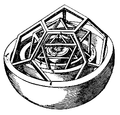 All of which is to say that I feel the study of media needs to engage fully with our future pasts in these premodern media worlds if we are to truly grasp the full potential of modalities of algorithmic/hardware capture and symbolic efficacy which lie in our future. For as Flusser has said, we are ‘programmed by images’ and symbols of various sorts. And in the process we must not forget the role of power in these forms of ‘capture,’ for there is no capture without an attempt to control. One need only think of the the massive value-capture machine known as Capital, whereby objects are monetarized and transformed from things into commodities, to see the implications of what is at stake with the forms of symbolic efficacy and algorithmic capture so carefully analyzed by Marx . For our media are not only the ways we carve up the world, but also, in its Hegelian reverse, the concrete, inverse mirror-reflections of ourselves.
All of which is to say that I feel the study of media needs to engage fully with our future pasts in these premodern media worlds if we are to truly grasp the full potential of modalities of algorithmic/hardware capture and symbolic efficacy which lie in our future. For as Flusser has said, we are ‘programmed by images’ and symbols of various sorts. And in the process we must not forget the role of power in these forms of ‘capture,’ for there is no capture without an attempt to control. One need only think of the the massive value-capture machine known as Capital, whereby objects are monetarized and transformed from things into commodities, to see the implications of what is at stake with the forms of symbolic efficacy and algorithmic capture so carefully analyzed by Marx . For our media are not only the ways we carve up the world, but also, in its Hegelian reverse, the concrete, inverse mirror-reflections of ourselves.

